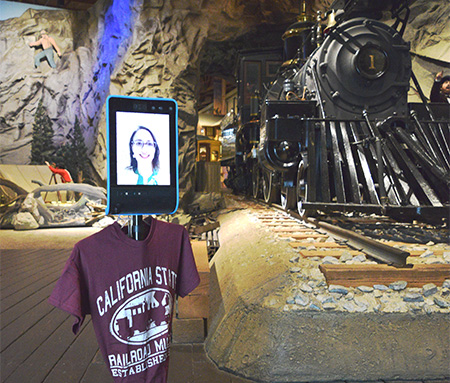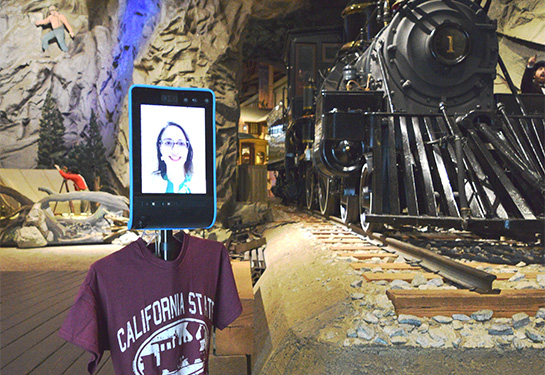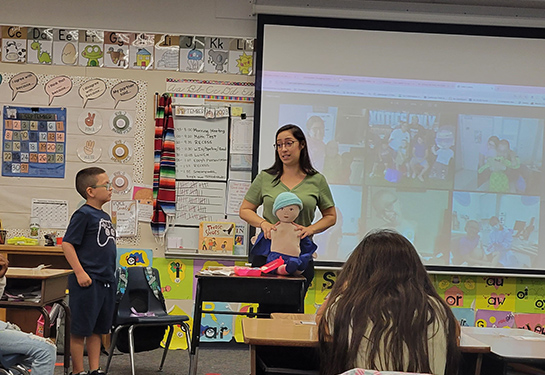UC Davis Health telerobot enables virtual visits to California State Railroad Museum
Technology will allow people with disabilities, medical conditions or a lack of transportation to enjoy the museum
The California State Railroad Museum now offers an innovative new way to visit the popular attraction, with the help of a UC Davis Health telerobot.

Virtual visitors can control the robot – a two-wheeled vehicle with a video screen and camera – and drive it around the museum, viewing displays and interacting with other people inside the museum. The robot provides access to anyone in the world, as long as they have a strong and reliable internet connection.
Remote visitors can decide what they want to see in the museum. The goal is to allow their visit to be as similar as possible to an in-person visitor’s experience. There are also safety features in place that prevent the robot from running into anything or falling over when it rolls over bumpy railroad tracks inside the museum.
“This program will benefit children who are not able to access the museum in-person, either due to a medical condition, transportation, or other reason,” said Veronica Ahumada-Newhart, who works at UC Davis Health in health informatics and human-technology interaction. Her UC Davis Health Technology and Social Connectedness Lab allows people to create meaningful experiences and connections through technology.
Ahumada-Newhart is also a researcher in the Department of Pediatrics and the UC Davis MIND Institute. She delivered the robot to the museum in late January; since then, museum and foundation staff have been setting it up and test-driving it.
This program first developed out of a desire to allow children who are unable to leave home or the hospital for medical reasons, visit the museum via robot. Over time, it became clear that many different groups of people could benefit from remote visits.
As the pilot program progresses, UC Davis Health will continue to study the effectiveness of the use of a telerobot in a cultural site such as this museum.
“It’s a significant change in the way we view access — using technology to increase human-to-human connections and have a physical presence in our community events and public spaces. These are people who traditionally have not been able, or have had difficult challenges, to accessing these resources,” Ahumada-Newhart said.
For more information about this pilot program, please visit the museum's telerobot page.
Related stories




